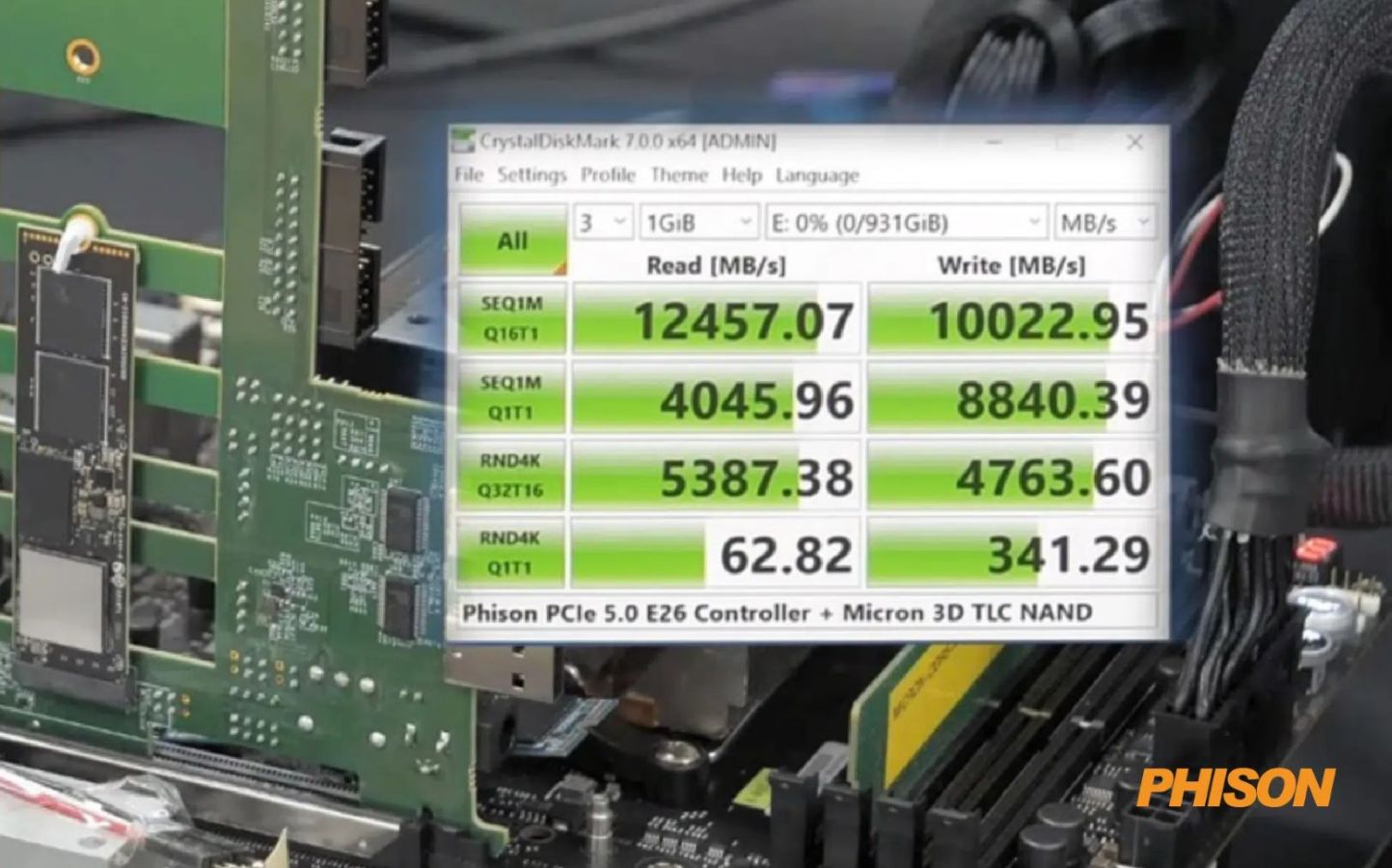
Timing is everything. A well timed punch turns a boxing match into a knockout, whereas a poorly landed one glances off. So it goes with computer hardware as well, especially at high speeds. The interplay between the processor, the motherboard, memory, the GPU, and storage lets us stream our favorite games with zero pop-in, nearly imperceptible load times, and at the highest possible fidelity. As fast as things are moving right now, hold onto your hat – it’s about to get a whole lot faster.
I sat down with the team at Phison, the company that created and manufactures the control chips for most modern NVMe storage, and talked to them about what they are doing with PCIe Gen5, and what sort of speeds it could yield. It turns out, there’s a whole lot of new technology in their new E26 (PS5026-E26 if you want to get very specific about it) controller, and we’ll all be the beneficiaries.
The biggest question on my mind was how fast these new drives would be, but how we get there was just as interesting. The short answer is up to 14,000MBps for sequential read, and 11,800MBps in sequential write, but there’s more to it than that. Paired up with the new 232-layer TLC NAND flash from companies like Samsung, Kioxia, Micron, Western Digital, SK Hynix, and Intel, these new chips are capable of delivering roughly double the fastest storage on the market today. That, however, is telling half the story.
Using a synthetic test, the team demonstrated sustained read and write that, rather than being filled with peaks and valleys, was effectively a straight line from left to right on the graph. The peaks and valleys in transfers are usually indicative of large and small files as there is a “ramp up” time for each file. That’s why drives typically have faster sustained reads and writes on a single large file rather than a number of smaller ones. Time to talk again about timing.

Present in enterprise-class drives, but now coming to consumer level drives, is a chip called a retimer and another called a redriver. A redriver is an integrated circuit that can amplify a high-frequency signal that might otherwise degrade over time and distance. Conversely, a retimer regenerates the signal rather than simply amplifying it. A redriver isn’t entirely uncommon, but retimers are. Combined, these two chips are capable of allowing the signal to be pushed at full speed even further, meaning we can finally get full rate speed more than just one slot away from the CPU. It also could mean later implementations such as full line rate in an external port. Imagining a portable device like a thumbdrive capable of over 10GBps makes my eyebrows raise.
One of the key components in wringing maximum speed out of these drives is integration with Microsoft DirectStorage. Normally, data has to be pulled through the CPU for decompression, making for one more stop until it’s either stored or presented to the user. With DirectStorage, this process is short circuited, instead utilizing the VRAM on the GPU to accomplish the same task, processing the work closest to the origin. We have our first example of DirectStorage in action in the game Forspoken. The load times are almost imperceptible on PC, and the streaming of the world is flawless. Undoubtedly we’ll see more games coming down the pipe now that the tech is on the horizon.
There is another interesting change with PCIe 5.0 solutions that folks will have to factor into their new builds – a new wire. PCIe 5.0 will require active cooling, meaning a tiny fan with its own connection back to a power source.
We’ve got quite a few manufacturers ready to ship new PCIe 5.0 drives throughout 2023, and we already have our PCIe 5.0-capable boards installed and ready to go. It’ll be interesting to see the synthetic real-world, and ultimately, how these new drives impact the games we love. Stay tuned, and thanks again to team Phison for the deep-dive!
